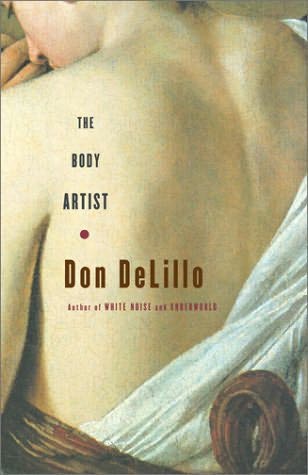 “Why shouldn't the death of a person you love bring you into lurid ruin? You don't know how to love the ones you love until they disappear abruptly. Then you understand how thinly distanced from their suffering, how sparing of self you often were, only rarely unguarded of heart, working your networks of give-and-take. “
“Why shouldn't the death of a person you love bring you into lurid ruin? You don't know how to love the ones you love until they disappear abruptly. Then you understand how thinly distanced from their suffering, how sparing of self you often were, only rarely unguarded of heart, working your networks of give-and-take. “ Instead of trying to match the geographical and chronological sprawl of his opus Underworld, DeLillo decided to narrow his focus as much as he possibly could for the follow-up, The Body Artist. Both its size (124 pages wide-margined pages) and its scope (the narrative rarely leaves the head Lauren Hartke, the titular protagonist), The Body Artist is the polar opposite of Underworld and isn't much like anything else I've read of DeLillo's either.
The book opens with some very creative writing, exploring in vivid and sometimes disconnected detail the thoughts that go through third-wife Lauren's head as she is having what will end up being her final breakfast with her husband, Rey. Rey is an art film director who, distressed by the critical and commercial failures of his recent work, will leave breakfast, head over to the house of his first wife, and shoot himself in the head. We're informed of Rey's death only through an obituary. The middle section details Lauren's discovery of a man in her house who talks and acts an awful lot like Rey when he's being comprehensible. Oddly enough, she never calls the police, although she does entertain the thought of turning him in to a mental institution.
Lauren's experiences with and interpretation of the man comprise the bulk of The Body Artist, but DeLillo steadfastly resists giving any real answers about his identity. Is he a construct of Lauren's grieving imagination? The reincarnation of Rey? A ghost? An idiot savant? Lauren never learns and neither do we. In practice, he's more of a plot device, a way for DeLillo to examine love, death, the significance of time, and memory with a tangible being. Despite this seeming nod to the audience, who probably prefer a plot, The Body Artist is a novel of ideas rather than action, and the review of Lauren's performance piece that wraps up the narrative isn't as satisfying as it could be.
Still, one wonders if DeLillo even intended for The Body Artist to be a page-turner. In the review of Lauren's act, the reviewer notes that many audience members left out of boredom or confusion, and, given the nature of this work, it's hard not to see the parallels between the art of the protagonist and the art of the author. And, that is all.

1 comment:
Hot golly.
Post a Comment